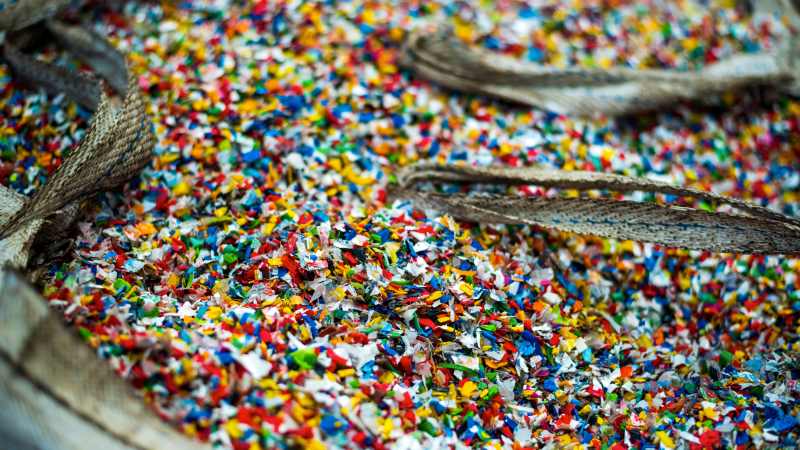Tires keep society as we know it rolling forward. Fossil fuel vehicles might be on their way out, but the electric revolution in the auto industry still relies on rubber tires to get around. Tires have a roadworthy lifespan that generally is between three and seven years. Approximately 80 million vehicles were produced in 2021, adding to the number of tires in circulation that will eventually need replacing.
Where do all the old tires go?
After the invention of cars, tires were dumped in landfills for the first few generations, causing pollution, tire fires, and rodent problems. Since the 1990s, waste tire recycling equipment and innovations have decreased the number of scrap tires by shredding them for use as fuel, sports turf, and construction materials. Many of the best uses of recycled tire rubber are still under development. Some exciting studies have found that recycled tire rubber can filter water better and faster than traditional methods.
Traditional Water Filtration
Most water filtration systems, for stormwater and wastewater, rely on the water slowly draining through sand and sediment. Because these systems rely on gravity, the larger, heavier particles settle faster while the finer sand stays on top. This pattern means the water takes a long time to infiltrate the small particles first. In some scenarios, this creates backwash, disrupting the whole system. Once the water filters through, it is pumped or drained for further treatment or back into the environment.
There are many different kinds of filtration systems, but most have a limited capacity in one way or another. Increasing the filtration rate is the most effective way to deal with greater water loads, like during a flood. Better filtration also decreases the size of water filtration facilities while keeping the same capacity.
Crumb Rubber Filtration
Tire recycling machinery creates crumb rubber, or tire crumb, through multiple processing steps. First, primary and secondary tire shredders shred the tires into rough pieces. Next, the steel wire and nylon fluff present in tires are removed. Then, a cracker mill reduces the size of the pieces until they are crumbs.
Once the rubber reaches appropriate-sized particles water filtration systems can use it as a filtration medium in place of the sand and sediment. Many filters use synthetic sediment to filter water. Although this has similar benefits to using crumb rubber, it is much more expensive to make. Rather than recycling an old product, it produces more synthetic material that is difficult to dispose of.
Benefits of Crumb Rubber Water Filtration
Faster Filtration
Because the larger particles in crumb rubber remain on top, the filter removes the biggest contaminants first, allowing the water to be filtered faster. Think of it like different strainers you might use in the kitchen. It’s best to strain food through a sieve with holes that are the right size for what you are trying to remove. If you are interested in the technical explanation, this is because crumb rubber allows for a higher hydraulic head, leading to less backwash.
Reduced Clogging
Filtering systems always try to strike a balance between effective filtration and remaining unclogged. Removing clogged from filtration systems is the number one reason filters require maintenance. Using crumb rubber reduces the amount of clogging that occurs compared to sand filters. Avoiding clogs means tire rubber filters require less maintenance and downtime.
Cleaner Output
Because crumb rubber is coarse enough to stop solids and fine enough to still allow water through in large quantities, it makes an ideal filtration medium. Compared to the sand filtration device used in the study out Penn State, “The crumb rubber media provide better effluent qualities and larger media allowing longer filter runs at higher flow rates.”
Potential Concerns
Before crumb rubber filters become widespread, more testing needs to be done on whether the crumb rubber leeches any toxins into the water that could contaminate drinking water or harm the environment. Also, innovators are investigating how crumb rubber deals with water containing a lot of contamination.
Crumb Rubber Start-ups
Innovations in the tire recycling industry continue to make starting a tire recycling business a viable and exciting option for entrepreneurs. After investing in the equipment to create crumb rubber out of waste tires, you can market the crumb to a wide variety of businesses. Other than water filtration innovators, crumb rubber is also used as a material for construction, an ingredient in asphalt, and mulch for landscaping projects.
Whether it’s helping purify contaminated water or reducing reliance on fossil fuels, recycling tires doesn’t only reduce the number of waste tires. It can actively help clean the environment too. To get started with your tire recycling venture, contact the team at Eco Green Equipment to familiarize yourself with the best recycling equipment in the industry.




